
Ingredient
Flounder roe
The Ocean's Golden Treasure: Exploring the Delicacy of Flounder Roe
Flounder roe is the egg sac of the flounder fish, typically found in the ovaries of female flounders. It is characterized by its small, round shape and vibrant golden color. The texture of flounder roe is soft and slightly gelatinous, with a delicate and creamy mouthfeel. Its flavor is subtle and briny, reminiscent of the sea, with a hint of sweetness. Flounder roe is highly prized for its unique taste and is often considered a delicacy in many cuisines.
Origins and history
Flounder roe has a long history of culinary use, particularly in Asian cuisines such as Japanese and Korean. It has been enjoyed for centuries, with records of its consumption dating back to ancient times. Flounder roe is often associated with celebrations and special occasions, symbolizing prosperity and good fortune. It is also highly regarded for its nutritional value and believed to have various health benefits.
Nutritional information
Flounder roe is a nutrient-dense ingredient, rich in omega-3 fatty acids, protein, vitamins, and minerals. It is low in calories and a good source of essential nutrients, including vitamin B12, selenium, and iodine.
Allergens
Flounder roe may pose a risk for individuals with seafood allergies. It is important to exercise caution and consult with a healthcare professional if you have any known allergies.
How to select
When selecting flounder roe, look for sacs that are firm and intact, with a vibrant golden color. Avoid roe that appears discolored, mushy, or has a strong fishy odor. Freshness is key, so choose roe that is refrigerated or displayed on ice.
Storage recommendations
To maintain the freshness and quality of flounder roe, it should be stored in the refrigerator at a temperature between 32°F and 39°F (0°C and 4°C). It is best consumed within a day or two of purchase for optimal flavor and texture.
How to produce
Flounder roe is typically harvested from mature female flounder fish. As an amateur, it is not feasible to produce flounder roe, as it requires specialized knowledge and equipment for fish farming and breeding.
Preparation tips
Flounder roe can be enjoyed in various ways. It can be lightly sautéed in butter or olive oil until it becomes slightly crispy on the outside while maintaining its creamy interior. Flounder roe can also be added to pasta dishes, sushi, or used as a topping for seafood salads. When cooking flounder roe, it is important to handle it gently to preserve its delicate texture.
Culinary uses
Flounder roe is commonly used in Japanese cuisine, where it is known as "mugi" or "kobako." It is often served as a sushi topping, incorporated into rice dishes, or used in traditional Japanese soups. In Korean cuisine, flounder roe, known as "myeongnan," is often marinated and served as a side dish or used as a filling for dumplings. Its delicate flavor and creamy texture make it a versatile ingredient in various seafood dishes.
Availability
Flounder roe is commonly available in regions where flounder fish are harvested, including coastal areas of Japan, Korea, and the United States.
More ingredients from this category

Shad roe
Delicate Delicacy
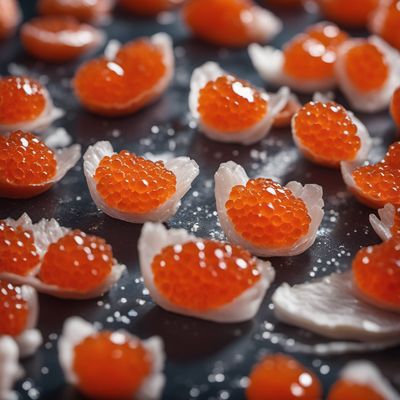
Salmon roe, atlantic
"Oceanic Delicacy: Exploring the World of Atlantic Salmon Roe"

Lumpfish roe
The Jewel of the Sea

Salmon roe, pacific
Oceanic Delicacy

Cod roe
"The Ocean's Delicacy: Exploring the Richness of Cod Roe"

Sturgeon roe
The Jewel of the Sea

Mullet roe
The Delicacy of the Sea

Herring roe
"Oceanic Delicacy: Exploring the World of Herring Roe"

Dolphinfish roe
Oceanic Delicacy: Dolphinfish Roe

Mackerel roe
The Ocean's Golden Treasure: Exploring the Delicacy of Mackerel Roe

Bluefish roe
Oceanic Delicacy: Exploring Bluefish Roe
Recipes using Flounder roe » Browse all

Thieboudienne - Senegalese Fish and Rice Stew
Savory Delight: Senegalese Thieboudienne - A Flavorful Fish and Rice Stew

Punjabi-style Spiced Fish Fry
Tandoori Machli: Punjabi-style Spiced Fish Fry
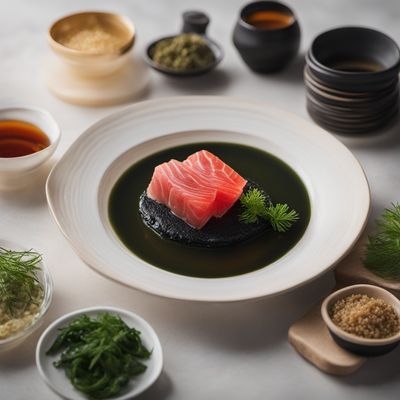
Unadon - Note by Note Style
The Symphony of Unadon: A Note by Note Culinary Masterpiece
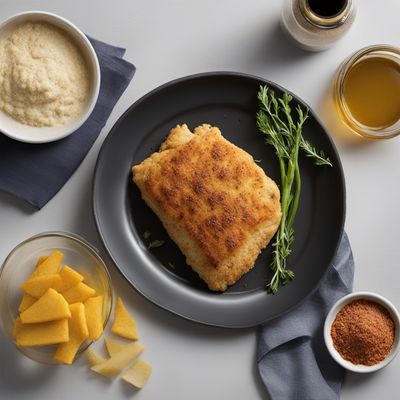
Midwestern Baked Grouper with Cornbread Crust
Lake-inspired Baked Grouper with a Crunchy Cornbread Crust
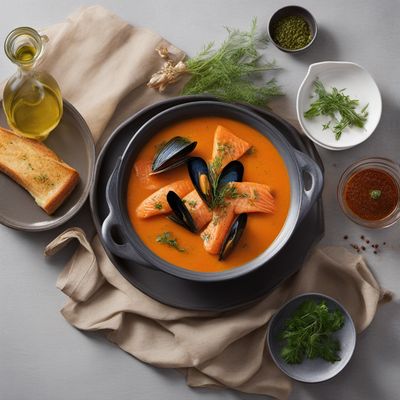
Classic French Fish Soup with Rouille
Mediterranean Delight: A Taste of the Sea in a Bowl

Braised Eel with Fragrant Spices
Spiced Delight: Fragrant Braised Eel
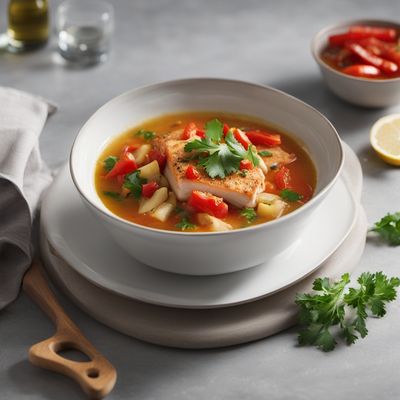
Sopa Coàda with a Twist
Catalan Comfort: A Modern Twist on Sopa Coàda

Hirame Nigiri Sushi
Delicate Flavors of the Sea: Hirame Nigiri Sushi
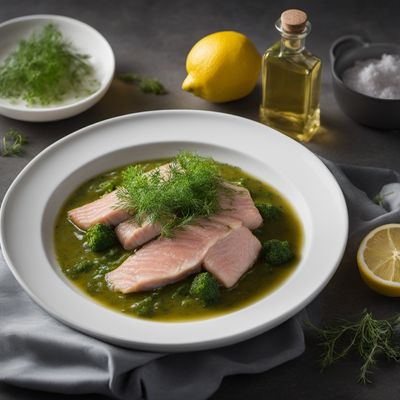
Kissuto Rombo with Icelandic Twist
Icelandic Rombo Delight: A Fusion of Filipino and Icelandic Flavors
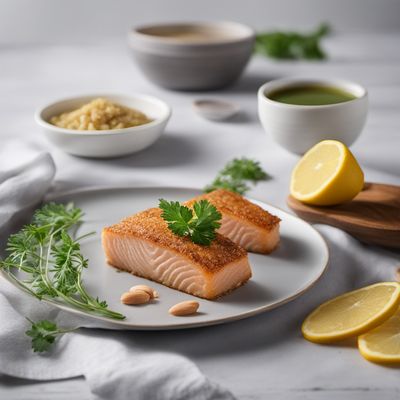
Amandine Delight
Almond-infused French Elegance

Bermuda Fish Chowder with a Twist
Savory Seafood Delight: Bermuda Fish Chowder with a Caribbean Kick

Grilled Spicy Stingray with Sambal Sauce
Fiery Delight: Grilled Spicy Stingray with Malaysian Sambal Sauce